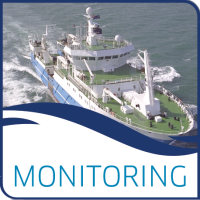Scotland is a globally important population centre for both harbour (Phoca vitulina) and grey seals (Halichoerus grypus). Up-to-date estimates of at-sea distribution are an important resource for marine spatial planning, particularly given the projected scale of decommissioning of oil and gas infrastructure and construction of offshore wind farms in Scottish waters in coming years. Previous distribution estimates were limited by a lack of tracking data for both species in Shetland, and estimates for Shetland were therefore made based on modelled habitat preference relationships of seals tagged in Orkney and the north coast of mainland Scotland. To address this knowledge gap, GPS satellite telemetry devices were deployed on harbour and grey seals in Shetland in 2022, funded by the Scottish Government Marine Directorate, NatureScot and the Department for Energy Security and Net Zero (DESNZ). The Scottish Government Marine Directorate funded the incorporation of these new harbour seal tracking data and recent haulout counts to update at-sea density estimates for harbour seals. Here we present updated at-sea distribution maps for both harbour and grey seals hauling out in Scotland, taking advantage of various improvements to the existing methods (Carter et al., 2022) funded by NERC INSITE II project EcoSTAR (with support from NERC National Capability - National Public Good funding).
Data and Resources
- Habitat-Based Seal Density Maps for Scotlandzip
This document is given in support of seal density maps provided to Scottish...
Download
| Field | Value |
|---|---|
| Publisher | |
| Modified | 2025-06-05 |
| Release Date | 2025-06-05 |
| Identifier | d8a47414-84c2-466f-9c69-d662147f8aed |
| Temporal Coverage | 2022-12-21 to 2024-03-31 |
| Language | English (United Kingdom) |
| License | UK Open Government Licence (OGL) |
| Data Dictionary | The updated maps were generated using regional habitat preference relationships derived from the new tracking data, in combination with previously used tracking data and the most recent available estimates of seal abundance (haulout counts). The downloadable content associated with this report is a series of Geographic Information Service (GIS) data layers with relative (percentage of at-sea population) and absolute (number of animals) estimates of harbour and grey seal at-sea density on a 5 km by 5 km grid for seals hauling out in Scotland. |
| Contact Name | Scottish Government, Marine Directorate |
| Contact Email | |
| Public Access Level | Public |


